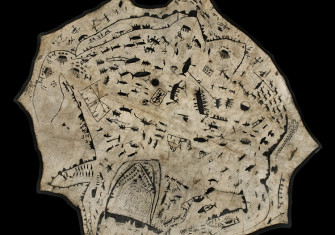The Map: Kyoto, c.1626
A map of the Japanese city from the Edo period was one of the earliest produced for general use.

Early maps of Kyoto were hand-painted and, initially, intended to preserve the memory of previous stages of the city as it grew and changed, rather than as aids for navigation. Later, maps started to be produced for and used by the city administrators as detailed surveys, showing road widths, house size, landowners’ names and place names.
This map shows the next phase of recording Kyoto. It is a product of the growth of woodblock printing and the resulting rise of commercial publishing in the Edo period (1603-1868), which, along with prompting the start of publishing fiction and political writings for wider audiences, saw the earliest maps being produced for general consumption.







